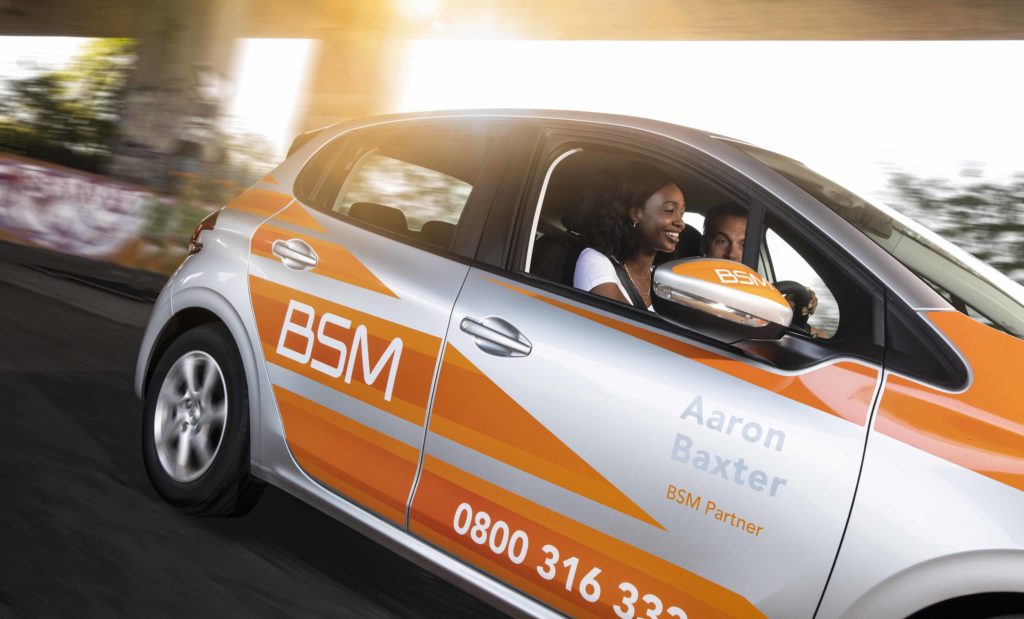Tips for driving in bad weather conditions

Tips for driving in bad weather conditions
It’s the start of a new year. A time when we all make a million New Year’s resolutions and do our best to stick to them, for longer than just the month of January. For many, learning to drive is at the top of this list, just like passing your theory test, passing your practical driving test or buying yourself a shiny new car if you’ve already done the hard part.
The start of the New Year also sees a continuation of the lovely UK weather. With dark mornings, dark nights and low temperatures, we find ourselves battling with the elements. Not only are we dealing with frost, ice and snow, we also have high winds, heavy rain and flooding to contend with. This can make for difficult and sometimes dangerous driving conditions and makes even the simplest of journeys seem treacherous, not just for new drivers but experienced ones as well.
Here are some top tips to help you and others stay safe on the roads this winter:
When driving in fog:
+ Check your fog lights, headlights and brake lights are working before you leave. Fog reduces what you and other drivers can see drastically, so you need to make sure you will be easily spotted.
+ Be on the lookout for cyclists and motorcyclists as they will be even harder to see and more vulnerable than those of us driving in the metal protection of our cars.
+ Avoid using high beams and use head lights instead. The water in fog reflects light so your high beams will actually make even it harder to see.
+ Remember only to use your fog lights when visibility drops below 100 metres.
+ Plan your route. Avoid driving over mountains as this is where fog is likely to be worse.
+ Go slowly. You often won’t be able to see bends until they are right in front of you and you need to make sure you can still manoeuvre them with control.
Driving in the rain:
+ Check your windscreen wipers are working correctly before you begin your journey. This may sound obvious but it’s easy to skip this step, especially when you’re in a rush! There’s nothing worse than smudgy windscreen wipers which only make things harder.
+ Plan your journey. Determine what areas are prone to flooding and try to find alternative routes which will keep you safe and protect your car at the same time.
+ If you do find yourself in a flooded area, assess whether your car is high enough off the road to travel through this safely. If it is, then decrease your speed and proceed slowly. If it’s too deep, you’ll just need to turn around and find another way. Be careful, sometimes water is deceiving and can be deeper than it looks.
+ Even if there is very shallow water on the road, you will still need to decrease your speed and move slowly to avoid aquaplaning. Aquaplaning occurs when the layer of water on the road stops your tyres from getting enough traction and can cause you to skid and slide.
+ It might also be worth mentioning… Try not to splash innocent pedestrians who chose to walk to the shops by driving through puddles!
Driving in frost, ice and snow :
+ If you are anything like me, as soon as winter approaches you start hoping for snow. Who doesn’t love snowball fights? Driving in the snow however, not so fun!
+ Brake gently and early. Slamming on your breaks on slippery ground is asking for trouble. Your tyres will lock and you’ll find yourself sliding all over the road.
+ If you do skid, try to stay calm and remember to turn into the skid to stop you from spinning and help regain control.
+ Stick to busier roads wherever possible. You’ll find these roads have either been cleared or cars which are more equipped to handle these conditions (like SUVs!), have already left some lovely tracks and grooves in the snow, which you can then drive in more safely.
+ Give yourself more time before you leave. Make sure to defrost your car so you can see clearly and remove any snow to stop this falling onto your windscreen mid journey.
+ Plan your journey and avoid hilly areas. If you do go down a hill, make sure to take it slow and consider whether there’s an even steeper hill the other side. You don’t want to get stuck in the middle!
Driving in high winds:
+ Keep both hands on the steering wheel at all times to make sure you stay in control of your car.
+ Be aware of other vehicles and road users who will be more affected by sudden gusts of wind, like lorries, vans and cyclists.
+ Always expect the unexpected. Stories of high winds often come accompanied by stories of trees being blown over into the middle of the road. Or dustbins, carrier bags and all other sorts of debris. Be prepared to react in case this lies in wait on your journey.
When dealing with any of these weather conditions, it is important you leave extra room between yourself and other drivers and cyclists.
Remember, the most important thing is that you and others stay safe, so don’t try to rush anything during the bad weather and know when to say no to driving altogether.
I know this seems like a lot to take in, but the more you drive the more natural this will all become.
If you’ve already passed your Practical Driving Test but you’re still feeling a little nervous about driving in these conditions, why not try our Pass Plus course. One of the modules in this course covers driving in all weather and may help you feel more prepared! Check out our website if this is something you’d be interested in: https://www.bsm.co.uk/driving-lessons
Featured posts

Reward and Recognition Scheme - BSM Instructor Andy Ogborne
We're pleased to announce our first winner of the quarterly commendation award is BSM Partner Andy Ogborne. Andy, based in Llanelli has showed fantastic commitment and service levels over this quar

Hazard Perception Test Changes 2018
Hazard Perception Test Changes Learning to drive is an exciting part of your life and quite a transformation of your lifestyle once finished, enabling freedom and a sense of independence. So it goes

One in four women considered career changes in pandemic
New research has shown more than one quarter of women have considered changing careers during the pandemic. Overall, 24% of adults said they had looked into changing their career or had actually mo

Public Health England Smoke Free Campaign
From the 1st October, you could face a £50 fine if you or a mate smoke in a vehicle with someone under 18 present. Both the driver and the smoker could be fined. For free, proven support to help you